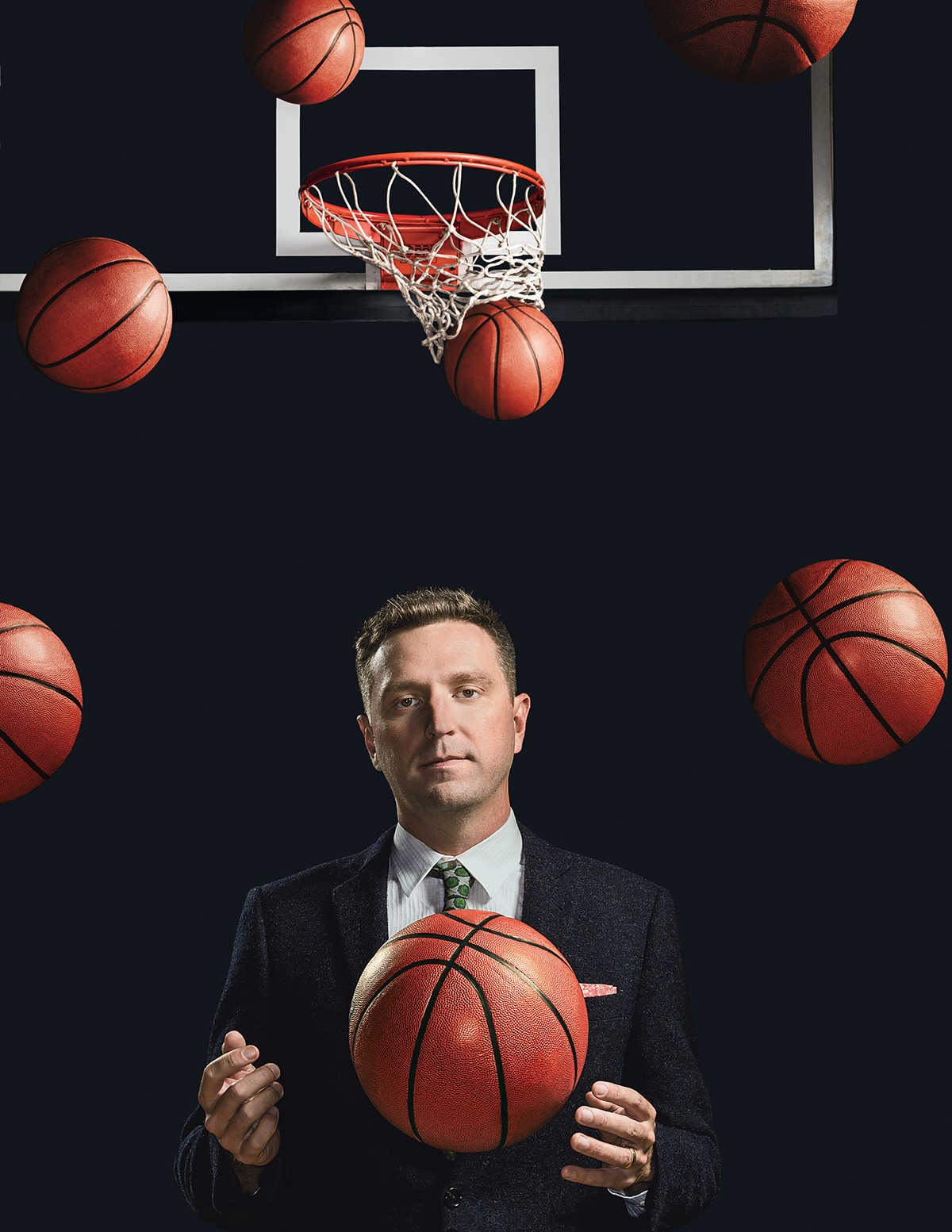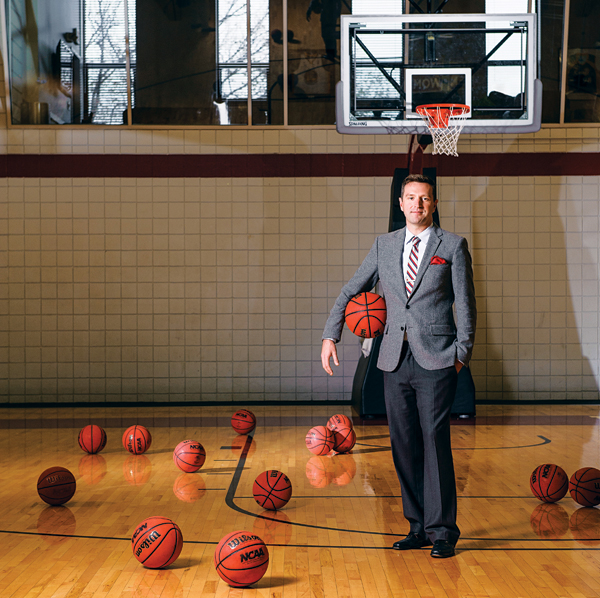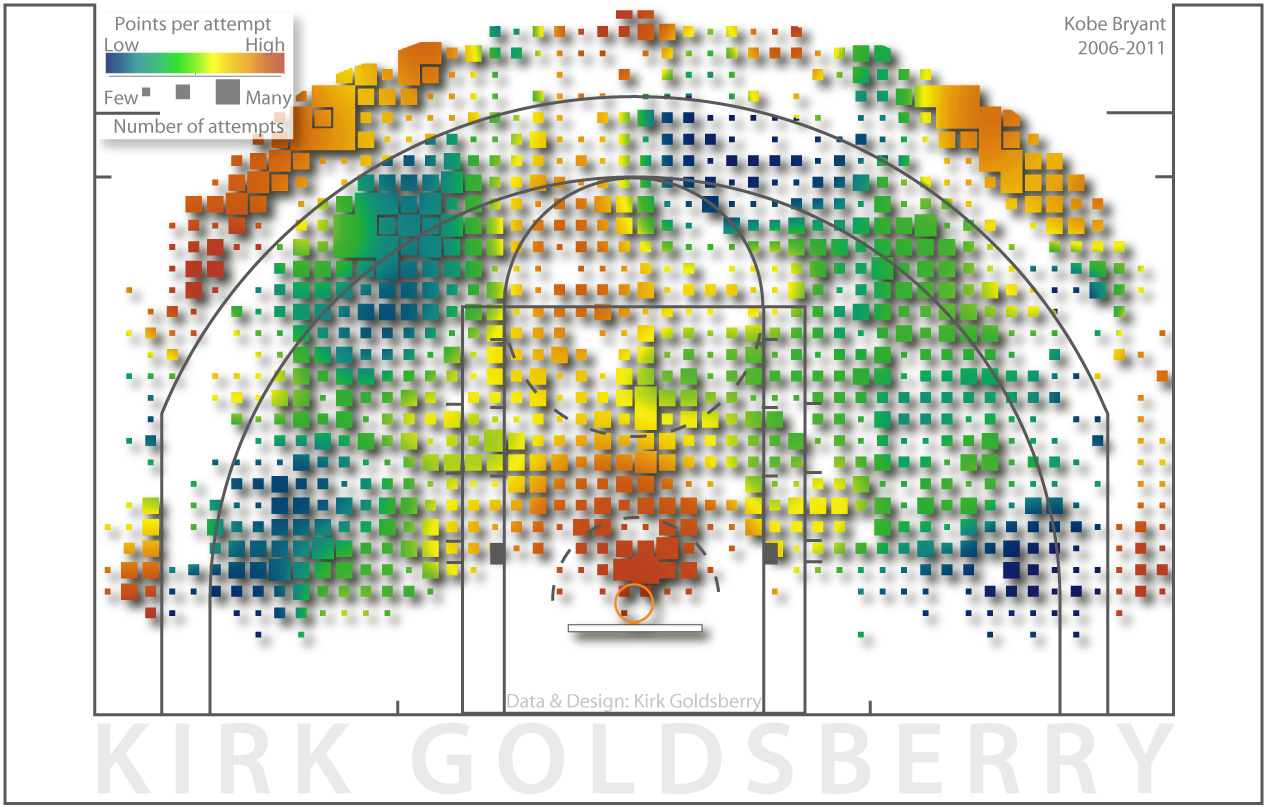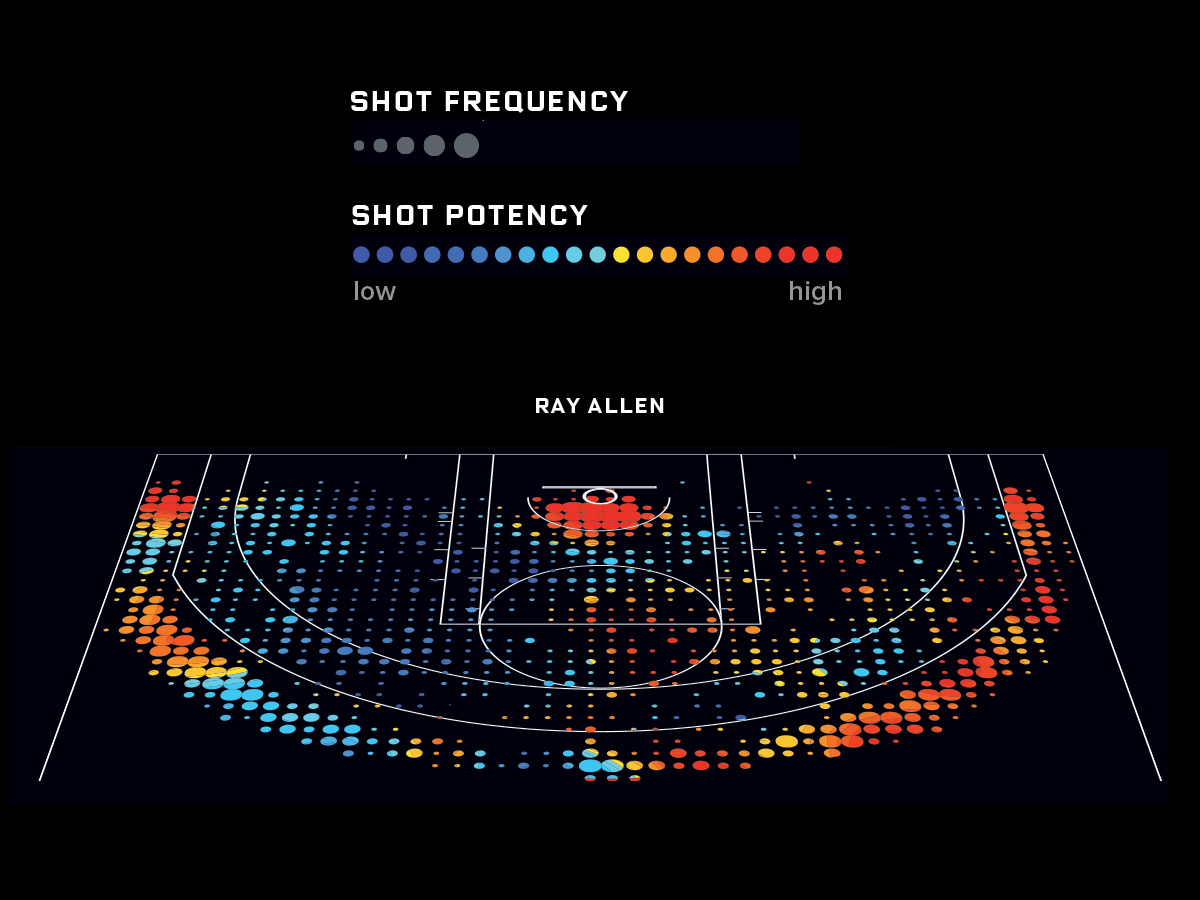Alumnus Kirk Goldsberry (PhD 2007) has scored big time with his use of spatial and visual analytics as a means to enhance basketball expertise. “All maps simplify reality – that’s the nature of the geospatial beast. My basketball maps expose the general tendencies and spatial shooting behaviors of NBA players and teams; they are not intended to explain every aspect of basketball reality.” However, “the things Goldsberry, the USC team, and others are looking at — finding ways to measure and visualize stuff that we might think or believe, but not know for sure — can not only help teams make better decisions; they can open the door to a whole new way of seeing the game” (source).
Kirk’s “CourtVision Analytics” were originally presented in a research paper at the 2012 MIT Sloan Sports Analytics Conference in Boston which was one of two finalists for top paper amongst over 100 submissions and was featured in the New York Times blog “Off the Dribble.” His analytics were then featured again in an interactive N.B.A. Finals preview which was posted in both the New York Times and USA Today (see the June 12, 2012 article, “Alumnus Kirk Goldsberry Featured in New York Times – Again!”). Those write-ups were followed by an article in The Boston Daily which noted that “This year, after a lot of trial and error, he began producing astonishingly information-rich maps (precise to the square foot) that show the spots on a court where a shooter’s attempts are most likely to be successful. Nine NBA teams have approached Goldsberry about using his maps to find their players’ strengths and weaknesses.”
Recently, Wired.com devoted a major business article about Kirk’s CourtVision which was written by Mark McClusky and posted October 28, 2014, with the title “This Guy’s Quest to Track Every Shot in the NBA Changed Basketball Forever.” Some extracts:
- All through his education, Goldsberry didn’t just watch basketball; he played it too—recreationally, in pickup games. And as he played, he started to think about the game and how it differed from other sports. Analytics—breaking down play and performance with statistics—was starting to supplement more traditional coaching and evaluation methods like watching videotape and working on physical fundamentals.
- Goldsberry began to focus on the locations and movement of objects—specifically, the players and the ball. It was a mapping problem. From that perspective, and with the help of some massive new data sets, he could do more than merely quantify what people thought they knew about the game. He could discover hidden truths about hoops, shining light into dark corners that no one even knew were corners.
- One of the people intrigued by Goldsberry’s work was Brian Kopp, then an executive at Stats, located just outside of Chicago. A group of baseball researchers started Stats in the 1980s to gather the best statistical information they could about the game. Now the company is a behemoth, providing statistical information about professional sports in the US to teams, leagues, and the media. In 2012, Stats was working on basketball too—messing around with a new kind of data-gathering it called SportVU. Shortly after that 2012 presentation at the Sloan conference, Kopp called Goldsberry and asked if he would be interested in taking a look.
- This is no longer a part-time hobby for Goldsberry. He has parlayed his work into a job writing about analytics for the sports website Grantland, and although he won’t confirm it, there are reports that multiple NBA teams have consulted with him. And he’s still at Harvard, where he’s organized a group of students that call themselves the XY Hoops after the mathematic shorthand for the coordinate system. “This wasn’t my idea—it came from my students,” Goldsberry says. “It’s like I’m the Foo Fighters, and they’re the hot new band. I’m almost a nostalgia act already.”
From Faster, Higher, Stronger: How Sports Science Is Creating a New Generation of Superathletes—and What We Can Learn from Them by Mark McClusky. Reprinted by arrangement with Hudson Street Press, a member of Penguin Group (USA) LLC, a Penguin Random House Company. Copyright © Mark McClusky, 2014. Editor’s note: Many thanks to grad student Grant McKenzie for suggesting this material.





